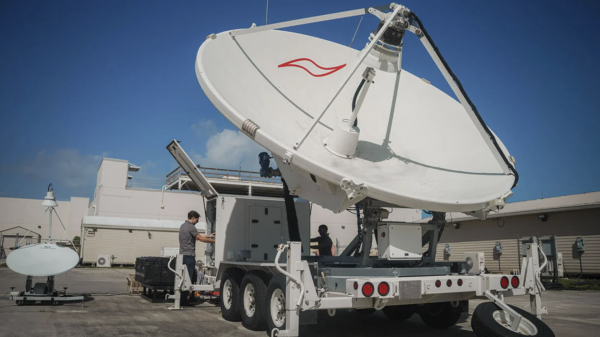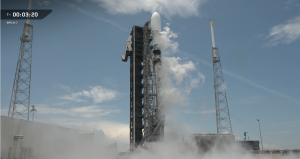Space Force must better operationalize commercial data for space situational awareness, GAO says

The ability to identify and track a growing number of objects in space has become a key priority for the Space Force, and the service must better utilize data from the commercial sector for this mission, according to the Government Accountability Office (GAO).
“The rapid rise in the importance and challenges of operating in space necessitates enhancements to [space situational awareness] capabilities, including consideration of commercially available data and tools,” the watchdog said in a new report published Monday.
Also sometimes referred to as space domain awareness, space situational awareness (SSA) is a Space Force mission to identify and track objects on orbit — including friendly and enemy space-based architectures as well as debris. As space becomes more relevant as a warfighting domain, space leaders have noted there are challenges in keeping track of everything on orbit.
“It’s a legacy construct where the purpose of space domain awareness was to catalog objects in space so we knew what was there and could basically account for if things were going to run into each other,” Chief of Space Operations Gen. Chance Saltzman said during a media roundtable at Space Symposium last week. “That’s just not going to be sufficient when we start talking about space as a warfighting domain.”
The space domain has become more congested in recent years, and the Space Force has limited capacity in personnel able to track objects, gaps in where ground-based sensors are located on Earth and minimal sensor capability for objects located in deep space, the report highlighted. The service has some programs to help close these gaps, including its Silent Barker satellite system, the Deep Space Advanced Radar Capability (DARC) and the Ground Based Optical Sensor System (GBOSS).
Both the Space Force and United States Space Command are also looking to leverage a variety of data collected by commercial companies for space domain awareness, but little progress has been made in fully recognizing what commercial data is available to the service and how it could be used for the SSA mission, the report noted.
“The Space Force does not have a current and complete understanding of commercial SSA capabilities because the Space Force has not established a comprehensive process to regularly identify and evaluate those capabilities, including the extent to which commercial SSA data could meet its SSA needs,” the watchdog wrote, adding that “more complete and regular evaluations of commercial SSA data would help make the Space Force aware of the full range of SSA data available on the commercial market.”
Without regular evaluations, the service may fail to identify opportunities to leverage commercial data for its SSA missions, the report said.
At the same time, the Space Force has a centralized location that hosts space domain awareness data from commercial companies, the United States government, academia and other countries — the Unified Data Library. An initial operational version of the cloud-based data storage space is already in use, and the service plans to spend $364.5 million over the next five years to further develop it.
According to the GAO report, however, the data library is not being used for daily space domain awareness missions. Furthermore, the service has yet to create a plan that addresses challenges the UDL has with space situational domain awareness mission systems, the report added.
Those who spoke to the watchdog listed challenges related to a lack of commercial integration into the UDL, timeliness of the data available in the library and an absence of a single defined data standard.
The report said that “while the creation of the UDL and the standup of its initial operational capability provides a single location for key data to be stored, the efforts to date do not yet meet the DOD requirement that the UDL be used to support all operational space activities. Creating a plan to integrate the UDL into Space Force operational systems, such as SSA and Space [command and control] missions, would better ensure operators had access to the full suite of DOD and commercial data to execute these critical national security missions.”
The GAO recommended that the Space Force establish a process to regularly identify and evaluate commercial SSA capabilities and how they could be operationalized. In addition, the watchdog is recommending that the Space Force create a plan to determine how the Unified Data Library can have access and manage all of the data for the service’s SSA systems.
The Defense Department agreed with the GAO’s suggestions, noting that the Department of the Air Force and the Space Force are currently working on a Space Force Commercial Space Strategy in which the watchdog’s recommendations would be considered and addressed. The strategy is slated for release no later than June 2023, according to the report.






